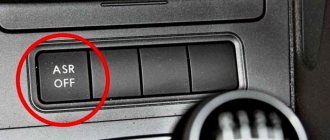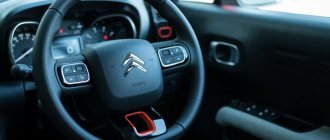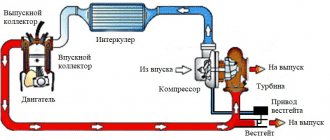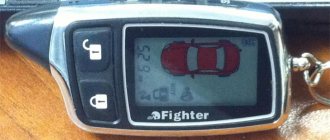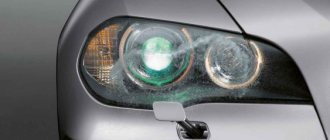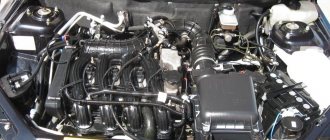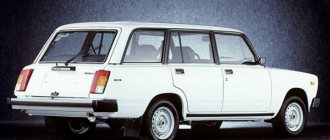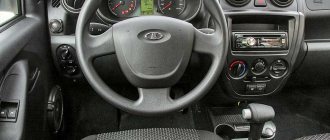Rotary internal combustion , created as an alternative to classic piston units, was distinguished by its compact size and high power. Technological difficulties and high costs did not allow the motor to gain popularity. Serial production was mastered by only a few automobile plants, and the introduction of turbochargers and the use of continuous variable valve timing systems put an end to the further development of the original design.
History of the creation of a rotary engine
The second name of the rotary engine (RPE) is Wankel (a kind of analogue of a diesel engine).
It is Felix Wankel who today is credited with the laurels of the inventor of the rotary piston engine, and even a touching story is told about how Wankel walked towards his goal at the same time as Hitler walked towards his. In fact, everything was a little different: a talented engineer, Felix Wankel, really worked on developing a new, simple internal combustion engine, but it was a different engine based on the joint rotation of rotors.
After the war, Wankel was recruited by the German company NSU, which was mainly involved in the production of motorcycles, to one of the working groups working on the creation of a rotary engine under the leadership of Walter Freude.
Wankel's contribution was extensive research into rotary valve seals. The basic design and engineering concept are Freud's. Although Wankel had a patent for dual rotation.
The first engine had a rotating chamber and a stationary rotor. The inconvenience of the design suggested the idea of changing the layout.
The first rotating rotor engine began operation in mid-1958. It differed little from its descendant of our days - except that the candles had to be moved to the body.
Felix Wankel and his first rotary engine
Soon the company announced that it had managed to create a new and very promising engine. Almost a hundred car manufacturing companies have purchased licenses to produce this engine. A third of the licenses ended up in Japan.
Power and working stroke
When the Wankel engine operates, a standard 4-stroke cycle is used, gas distribution is carried out by the edges of the rotor. The incoming flow has reduced turbulence, which leads to uneven combustion of the mixture and the release of part of the fuel with the exhaust gas flow. During one working cycle of the rotor, the eccentric shaft connected to it will perform 3 revolutions.
When rotating, the volume of the chambers changes, which makes it possible to avoid installing a valve mechanism with a forced drive.
RPD in the USSR
But the Soviet Union did not buy a license at all. The development of our own rotary engine began with the fact that the German Ro-80 car, the production of which NSU began in 1967, was brought to the Union and dismantled.
Seven years after this, a design bureau appeared at the VAZ plant, developing exclusively rotary piston engines. Through his work, the VAZ-311 engine appeared in 1976. But the first pancake turned out to be lumpy, and it was refined for another six years.
The first Soviet production car with a rotary engine was the VAZ-21018, introduced in 1982. Unfortunately, already in the pilot batch, the motors of all the cars failed. They worked on it for another year, after which the VAZ-411 and VAZ 413 appeared, which were adopted by the security forces of the USSR. There they weren’t particularly worried about fuel consumption and the short service life of the engine, but they needed fast, powerful, but inconspicuous cars that could keep up with a foreign car.
VAZ with a rotary engine (GAI)
Cars with Wankel engine
NSU Ro-80
From the very beginning of work on the rotary engine, NSU made no secret of this. Any car company could buy a license to produce a new engine, and buyers were immediately found. Daimler Benz, GM, Mazda, Citroen, Toyota... Many of them wanted a cheap and powerful engine, but when faced with reliability and operation problems, they stopped development. And NSU itself burned down precisely during operation. Inexperienced buyers simply burned the engines, over-twisting them beyond any limits. Engine reliability in such conditions was too low. And then there are the fuel crises! Fuel consumption for the Ro-80 ranged from 15 to 17.5 liters per 100 km...
Financial problems drove NSU into a hole from which it was never destined to escape: in 1969, it was swallowed up whole by Volkswagen. This ended the serial production of rotary cars in Germany.
But there were experimental machines. Mercedes Benz was working on a supercar with a rotary engine. The prototype appeared in 1969 and was equipped with a three-section rotary engine with a volume of each section of 600 cm3 and a power of 280 horsepower. A light car with a plastic body accelerated to 257.5 km/h, and to “hundreds” in five seconds.
Mercedes C111
A year later, at the Geneva Motor Show, the second generation C111 was presented to the public. The car had a super streamlined body for those times, its Cx was within 0.325. The engine received another section and now developed 350 hp. The driver of such a car could drive at a speed of 300 km/h, and thanks to the redesigned and strengthened body frame, he enjoyed the car's behavior in corners. The second sample accelerated to 100 km/h even faster - in 4.8 seconds the orange wedge-shaped car reached the magic mark and continued to pick up speed.
Gulfwing fans were already lining up for the new Wing, but Mercedes had no intention of producing remakes of its legend. These machines were needed to test the new engine, but even MB was unable to cope with the main problem of the rotary engine - its gluttony was colossal. Thus, the oil crises ruined the German direction of developing Wankels.
Chevrolet Corvette
Overseas they also looked closely at the Wankel engine. Chevrolet received a license to manufacture rotary engines and in 1970 began developing Corvettes with two- and four-unit engines. The fiberglass model with the engine in the base received the approval of GM President Ed Cole in June 1971. A year later, in June 1972, the steel-bodied Corvette with a two-piece rotary engine was presented to the GM board and designated the XP-987GT.
By January 1973, the Corvette with a four-section engine was assembled, and in April it was blown in a wind tunnel in California. Corvette with two-piece rotor producing 266 hp. exhibited to the public on September 13, 1973 in Frankfurt, and its brother with a four-section heart and a power of 390 hp. appeared at the Paris Salon on October 4 of the same year. But on September 24, 1974, Ed Cole shelved development of the Wankel-powered Corvette due to production difficulties.
The German idea was also adopted in neighboring France. The French began collaborating with NSU in 1964, forming the Comotor company with a German partner. In 1973, Citroen completed development of the rotary engine and in 1974 the Citroen GS Birotor went into production.
Citroen GS Birotor
The car was equipped with a two-section rotary engine with a volume of 2 x 498 cm3, developing 107 horsepower at 5500 rpm. The working mixture was supplied to the Wankel by two Solex carburetors. The machines are also equipped with semi-automatic and hydraulic suspension. When the engine is started, the Birotor rises off the ground (a Citroen tradition) and looks almost like a four-wheel drive. The interior was trimmed with fabric and vinyl, and additional equipment included a radio, tinted glass and a sunroof.
From March to August 1974, 750 Citroens with rotary engines left the plant. By the end of 1974, 93 more cars were made, and in 1975 only 31 GS Birotor rolled off the assembly line. In total, as it is not difficult to calculate, 874 Citroen GS Birotor were made. In 1977, the plant recalled the rotary machines to eliminate them. However, about 200 cars could have survived, but most are not registered anywhere. The likelihood of finding a live Birotor is greatest in France, and in general they were sold in Sweden, Great Britain, Germany, Denmark and the Netherlands.
But the Wankel idea acquired its most faithful and consistent admirer in distant Japan, where Mazda desperately needed a fresh idea to stand out among the rest. Then the samurai government came up with the idea of uniting the entire auto industry. But they refused it, and they did the right thing!
Mazda Cosmo Sport
Mazda's first car with a rotary engine was the Mazda Cosmo Sport coupe, the first example of which was shown at the Tokyo Motor Show in 1964. The first batch of 60 Cosmos was produced in 1965, but mass production began only in 1967.
The Series 1 Kosmos was equipped with a two-section 2 x 491 cm3 Wankel 10A 0810 engine with two Hitachi carburetors. This power plant developed a power of 110 hp. and accelerated a rather large car to 185 kilometers per hour. The car was driven by a 4-speed manual transmission and front independent suspension. The first series was produced from May 1967 to July 1968, 343 cars were made.
From July 1968, a second series of Cosmo Sport was produced. The car received a 10A 0813 engine with 128 horsepower, a five-speed gearbox, more powerful brakes and 15-inch brakes (the previous series had 14-inch ones). Now Cosmos could reach a speed of 120 miles per hour (or 193 km/h), and cover a four-hundred-meter distance when starting from a standstill in 15.8 seconds. Externally, the updated model could be distinguished by its enlarged “mouth” and slightly larger base. Until July 1972, 1176 cars were made, which is relatively good with manual assembly and the production rate of one car per day.
At the same time, from 1968 to 1973, a rotary modification of the Familia model was produced. The two-door coupe used the chassis of the regular Familia, but under the hood it had a 100 hp Wankel engine. from Space. The lower power of the 10A 0820 engine compared to the Cosmo is explained by the small size of the carburetor. For an inexpensive car, inexpensive materials were used - in particular, aluminum was replaced with cast iron. But the engine weight increased slightly, by 20 kg, and reached only 122 kg. The Familia R100 competed in the 24 Hours of Spa and Le Mans, where it lost only to 911s and BMWs.
Mazda Luce R130
The third model was the rear-wheel drive luxury coupe Luce. The front-engine car, designed by Giugiaro, was equipped with a Model 13A engine with a volume of 2 x 655 cm3, developing 126 horsepower. The Luce R130 could cover the quarter mile from a standstill in 16.9 seconds. This car was not supplied to the American market. The model was produced from 1969 to 1972.
In the 70s of the last century, the Japanese installed the Wankel engine on almost any of their new models, from Capella to pickup trucks and minibuses. It was during this decade that the RX brand was born, which means the same to Mazda as GTI does to Volkswagen. The rotary engine outperformed competitors in all respects, but unexpected financial losses forced the company's management. In 1970, the replacement Familia R100 appeared. The new Mazda RX2 was based on the Capella chassis with a conventional piston engine. The RX2 was offered to buyers with sedan and coupe bodies, which were only modifications of the same versions of the Capella model, differing from them in appearance only in nameplates. The main changes were hidden under the hood.
The RX2 was equipped with a 12A modification engine, having two sections with a total volume of 1146 cubic centimeters. The Wankel developed a power of 130 hp, which for a car weighing 1050 kg meant good dynamics even by today's standards. Such “hotness” of the model ensured her the love of fans. In 1974, the Mazda RX2 received a slightly improved engine, which allowed it to remain in production until 1978.
From October 1972, Mazda produced a large car, the Luce Rotary, which replaced the Luce R130. Three bodies - coupe, sedan and station wagon, a manual 4-speed gearbox and a 3-speed automatic were impressive. The car was sold with a 12A engine producing 130 hp, but since 1974 it was exported to America equipped with a 13B series engine and under the new name RX-4. This rotary engine consumed less fuel and met US emissions standards.
13V produced a power of 110 hp, which provided the coupe or sedan with a curb weight of about 1190 kg with good dynamics. The station wagon took part in tests by Road&Truck magazine in 1974 and showed quite acceptable results, despite its weight having increased to 1330 kg. Accelerating to 60 mph in 11.7 seconds, he covered 400 meters in 18 seconds, showing 124.5 km/h at the end of the measured segment. The magazine also noted the increased efficiency of the model, including it in the top ten “Best Buys in the price range of $3500-6000.” The car itself cost $4,250, but you had to pay extra for options like air conditioning ($395) or automatic transmission ($270). The model was produced for exactly five years, having undergone a body update in 1976.
Mazda Rotary Pickup
Since 1974, the first and so far only rotary pickup truck began to be sold on the American and Canadian car markets. Mazda sold it exclusively on the overseas market; it was not represented on the domestic market. The rotary model differed from the B-series pickups and their related Ford Courier in appearance - larger bumpers, different lines, a chrome front grille and round rear lights.
Under the hood of the Rotary Pickup was the familiar 13B engine, which gave the pickup a fair amount of sportiness. 15,000 machines were produced, most of which were sold in 1974, before the energy crisis. Due to the crisis, sales fell sharply; only about 700 cars were made for the 1976 model year. Mazda changed the design for the 1977 model year cars, updated the electronics, replaced the gearbox with a 5-speed one, and even lengthened the cabin by 10 cm for greater comfort, but that’s all. it was in vain. In 1977, the model was discontinued.
Mazda Parkway Rotary 26
Since July 1974, another rare model, the Parkway Rotary 26, was produced - the only bus in the world with a rotary engine. It was equipped with a model 13B engine with a displacement of 2 x 654 cm3, which already developed 135 hp. and had a low level of harmful substances in the exhaust gases. This power unit was controlled using a four-speed manual gearbox. The rather large bus (dimensions 6195 x 1980 x 2295 mm, curb weight 2835 kg) easily accelerated to a cruising speed of 120 km/h.
The Parkway received the nickname “twenty-six” for its capacity - in the standard DX configuration it had 26 passenger seats on board, which was reflected in its name. There was also a luxury version, Super DX, which could seat only thirteen people. The model was distinguished by a low level of vibration and silence in the cabin, which was ensured by the smooth operation of the rotary engine. Upon request, Parkway could be equipped with a ventilation system. Production completed in 1976.
In 1975, the Australian Holden branch of the Ford concern supplied its Japanese colleagues with a Premier executive class car for production under the Mazda brand. Car production was successfully mastered, but Holden did not give the Japanese engines suitable for a car weighing 1575 kg, and they adapted a Model 13B rotary engine under the hood of the large Mazda RoadPacer sedan. Since it was more powerful than those engines that Holden had, the maximum speed reached 166 km/h, but it clearly did not have enough torque. Acceleration was very weak, and the fuel consumption of the engine, which was not known for its poor appetite, went through the roof at 26 liters of gasoline per 100 km. Originally planned as a representative car, the car went on sale during the fuel crisis and naturally did not achieve success in the market. The unlucky RoadPacer was discontinued after three years.
Mazda RX-7
The latest, third generation RX-7 was a full-blooded Japanese sports car. Under the hood was a rotary engine model 13B-REW, equipped with two turbines located one behind the other. The system of operation of two turbines was developed together with Hitachi and tested on the Cosmo model, sold on the domestic market. The first turbine was small and started working at low engine speeds (from about 1800 rpm) so that “turbo lag” did not occur. The second turbine was larger and started working at 4000 rpm. Their joint work was so well-established that there was always “enough” torque.
The FD platform has been rated as a world-class development. Long-term work on improving driving performance, a refined chassis, a low center of gravity and uniform weight distribution along the axles have led to the emergence of a very serious “driver’s” car.
RPD in the West
In the West, the rotary engine did not produce a boom, and its development in the USA and Europe was put an end to the fuel crisis of 1973, when gasoline prices soared and car buyers began to ask the price of models with economical fuel consumption.
Considering that the rotary engine consumed up to 20 liters of gasoline per hundred kilometers, its sales during the crisis fell to the limit.
The only country in the East that did not lose faith was Japan. But even there, manufacturers quickly lost interest in the engine, which did not want to improve. And in the end, there was one persistent tin soldier left - the Mazda company. In the USSR, the fuel crisis was not felt. The production of vehicles with RPD continued after the collapse of the Union. VAZ stopped working on RPD only in 2004. Mazda came to terms only in 2012.
Creator – Felix Wankel
Rotary engine
There is an old story that Wankel invented the miracle engine in 1919. It was always hard to believe in her: how could a 17-year-old boy, albeit talented, do such a thing? To do this, you need to undergo training somewhere at a university, learn how to design and draw... Much more likely is information about the first sketches of the engine from 1924, which Wankel made after graduating from high school and going to work at a technical literature publishing house. While shoveling mountains of waste paper, you can either lose interest in technology forever, or start designing it yourself. Apparently, Felix’s soul was in design.
He opened his own workshop in the city of Heidelberg, and in 1927 the drawings of a “machine with rotating pistons” (abbreviated DKM in German) were born. Felix Wankel received his first patent, DRP 507584, in 1929, and in 1934 he applied for the DKM engine. True, he received a patent two years later. Then, in 1936, Wankel settled in Lindau, where he located his laboratory.
Felix Wankel
Then the authorities noticed the promising designer, and work on DKM had to be abandoned. Wankel worked for BMW, Daimler and DVL, the main aircraft engine manufacturers of Nazi Germany. So it is not surprising that before 1946 Wankel had to sit in prison as an accomplice of the regime. The French took the laboratory to Lindau, and Felix was simply left with nothing.
Only in 1951 did Wankel get a job at a motorcycle company - the then widely known NSU. While restoring the laboratory, he interested Walter Freude, a designer of racing motorcycles, with his designs. Together, Wankel and Freude pushed the project through management, and engine development accelerated dramatically. On February 1, 1957, the first rotary engine DKM-54 started operating. It ran on methanol, but by June the engine, which had worked 100 hours on the stand, was switched to gasoline.
Features of a rotary motor
The design is based on a triangular-shaped rotor, each of the faces of which has a convexity (Reuleaux triangle). The rotor rotates in a planetary manner around a central axis - the stator. The vertices of the triangle describe a complex curve called an epitrochoid. The shape of this curve determines the shape of the capsule within which the rotor rotates.
The rotary engine has the same four stroke cycles as its competitor, the piston engine.
Chambers are formed between the edges of the rotor and the walls of the capsule; their shape is variable crescent-shaped, which is the cause of some significant design flaws. To isolate the chambers from each other, seals are used - radial and end plates.
If we compare a rotary internal combustion engine with a piston one, the first thing that catches your eye is that during one revolution of the rotor, the power stroke occurs three times, and the output shaft rotates three times faster than the rotor itself.
The RPD does not have a gas distribution system
, which greatly simplifies its design.
And the high specific power with the small size and weight of the unit is a consequence of the absence of a crankshaft
, connecting rods and other interfaces between the chambers.
Appearance
The original design of the rotary piston engine made it possible to abandon the massive cylinder block, instead of which a cylindrical crankcase with a double wall is used to circulate coolant. Wankel engine and shorter than a piston engine , which makes it possible to reduce the dimensions of the engine compartment. The engine runs on a mixture prepared in the carburetor or using injectors for direct injection of gasoline. pulley is installed on to drive attachments and a clutch to transmit power to the gearbox.
Advantages and disadvantages of rotary engines
Advantages
- The good thing about a rotary engine is that consists of much fewer parts
than its competitor - by 35-40 percent.
- Two engines of the same power - rotary and piston - will differ greatly in size. Piston twice as big
.
- Rotary motor does not experience much load at high speeds
even if you accelerate the car to a speed of more than 100 km/h in low gear.
- A car with a rotary engine is easier to balance, which gives increased machine stability
on road.
- Even the lightest of vehicles do not suffer from vibration because The RPD vibrates much less than the piston
. This occurs due to the greater balance of the RPD.
Flaws
- Motorists would call it the main disadvantage of the rotary engine small resource
, which is a direct consequence of its design. Seals wear out extremely quickly, as their working angle is constantly changing.
- The motor is experiencing temperature changes
every stroke, which also contributes to wear of the material. Add to this the pressure that is exerted on the rubbing surfaces, which can only be treated by injecting oil directly into the manifold.
- Wear of seals
causes leakage between chambers whose pressure differences are too great. Because of this, engine efficiency decreases and environmental damage increases.
- Crescent The shape of the chambers does not contribute to the complete combustion of fuel
, and the speed of rotation of the rotor and the short length of the working stroke are the reason for pushing out gases that are still too hot, not completely burned, into the exhaust. In addition to gasoline combustion products, there is also oil present, which together makes the exhaust very toxic. Piston - causes less harm to the environment.
- Exorbitant appetites
gasoline engine has already been mentioned, and it “eats” up to 1 liter of oil per 1000 km. Moreover, once you forget about the oil, you can end up with major repairs, if not an engine replacement.
- High price
- due to the fact that the manufacture of a motor requires high-precision equipment and very high-quality materials.
As you can see, the rotary engine is full of shortcomings, but the piston engine is also imperfect, so the competition between them did not stop for so long. Is it over forever? Time will show.
rotor3
1 - stiffener;
2 - internal gear; 3 - spring pin; 4 — rotor bearing; 5 - side seal; 6 — shape of the edge of the side seal; 7 — side seal spring; 8 - rotor; 9 — seal of the rotor top (apex); 10 — apex corner; 11 — apex springs; 12 — rotor combustion chamber; 13 — corner seal spring; 14 — corner seal insert; 15 — corner seal 1 — stiffener; 2 - internal gear; 3 - spring pin; 4 — rotor bearing; 5 - side seal; 6 — shape of the edge of the side seal; 7 — side seal spring; 8 - rotor; 9 — seal of the rotor top (apex); 10 — apex corner; 11 — apex springs; 12 — rotor combustion chamber; 13 — corner seal spring; 14 — corner seal insert; 15 — corner seal
The rotor housings (stators) are made using sheet metal insertion technology: a special steel substrate is inserted into the aluminum alloy housing. Thanks to this, the design is light and durable. The steel backing is chrome plated with microscopic grooves for better oil retention. In fact, such a stator resembles a familiar cylinder with a dry sleeve and a hone on it.
The side casings are made of special cast iron. Each has inlet and outlet windows. And stationary gears are attached to the outer ones (front and rear). Motors of previous generations had these windows in the stator. That is, in the new design they increased their size and number. Due to this, the characteristics of the intake and exhaust of the working mixture have improved, and at the output - the engine efficiency, its power and fuel efficiency. The side housings paired with the rotors can be compared in functionality to the timing mechanism of a piston engine.
The rotor is essentially the same piston and at the same time a connecting rod. Made of special cast iron, hollow, as lightweight as possible. On each side there is a cuvette-shaped combustion chamber and, of course, seals. A rotor bearing is inserted into the inner part - a kind of connecting rod bearing for the crankshaft.
If a conventional piston uses only three rings (two compression rings and one oil scraper ring), then the rotor has several times more such elements. Thus, apexes (seals at the tops of the rotor) play the role of the first compression rings. They are made of cast iron with electron beam treatment to increase wear resistance in contact with the stator wall.
The story is not over...
Currently, the development of rotary engines is officially carried out only by Mazda, which has accumulated enormous experience in this area. It was her idea to make a rotary engine run on hydrogen fuel, thus eliminating emissions altogether. True, the Renesis hydrogen rotary engine operates reluctantly, producing only 109 horses. But for stubborn Japanese this is not a problem. So far, the RX-8 Hydrogene carries two tanks on board - one for gasoline, the other for hydrogen. On the highway, Mazda runs on gasoline, and in the city on hydrogen - switching between fuel types occurs from the driver's seat by simply pressing a button.
So the story of the rotary engine does not end there. Perhaps in the future the Japanese will adapt turbocharging to an engine running on pure hydrogen...
